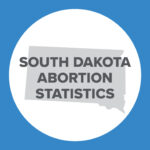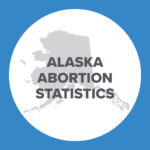Abortion Policy Allows Physicians to Intervene to Protect a Mother’s Life
This is Issue 3 of the On Women’s Health Series.
Her story is tragic, guaranteed to touch the heart of any compassionate American. As described in her lawsuit against the state of Texas, Amanda Zurawski of Austin finally became pregnant with a much-desired daughter, Willow, after a long struggle with infertility. Heartbreakingly, at 17 weeks 6 days gestation she was diagnosed with early cervical dilation (incompetent cervix) and then her water broke (previable premature rupture of membranes, or PPROM). Her doctors told her there was nothing they could do. It was far too early for her daughter to survive birth and Willow would inevitably die. The doctors told Amanda she was at high risk of developing a serious infection that could threaten her life and she should be delivered, but then they said they were unable to deliver her child to protect her from this risk because of a new state abortion law. Amanda was sent home from the hospital and indeed did develop an overwhelming infection that spread from her uterus to her bloodstream, requiring a three-day intensive care unit stay. As Amanda battled for her life, Willow was delivered and passed away, but the intervention did not come soon enough. Amanda developed complications of scar tissue in her reproductive organs, requiring surgery, and has been told she may be unable to have the baby she and her husband so desperately desire.[1]
The problem of previable, premature rupture of membranes (PPROM)
As an obstetrician/gynecologist practicing in Texas for over 30 years, I know this clinical scenario well. I have cared for two to four women a year who have experienced previable, premature rupture of membranes. Each situation is heartbreaking, as these unborn children are already loved by their families, causing intense grief as they anticipate their inevitable loss. Management can be complicated. Sometimes active labor begins immediately, but at other times labor is absent, and the clinician is confronted with the difficult decision of how best to care for both patients—a woman and her unborn child. The prognosis for the child is very poor. Delivery usually occurs due to maternal infection or labor before the child has reached the gestational age at which she can survive, and even if she reaches the point of viability, the lack of amniotic fluid may cause her lungs to fail to mature, leaving her unable to breathe when delivered. One study showed 36 percent of babies were stillborn and about 46 percent of live-born babies died within the first month.[2]
Additionally, the risk of infection for the mother is very high. Even if she does not show obvious evidence of infection, it is likely that an infection is present at diagnosis and may have been the initiating event that caused the amniotic membranes to rupture. Microscopic examination documents evidence of infection in 94 percent of placentas in the setting of PPROM between 21 and 24 weeks.[3] The risk to the mother of developing a more serious infection if the pregnancy continues is high (up to 71 percent)[4] and may progress to sepsis (overwhelming blood infection) or even maternal death.[5]
Medical recommendations for treatment of PPROM
For 30 years my management of this devastating situation has been, and remains, the same. I would explain the serious scenarios mentioned above to the mother and family. I offer immediate delivery due to the potential dire outcomes, but I also offer watchful waiting if the mother desires. Either is appropriate, even if there is no evidence of clinical infection present at diagnosis. I have had some patients who desired to wait in hopes that their child would remain undelivered until a gestational age at which she could potentially be saved. Of course, this decision may be influenced by other factors, such as gestational age at diagnosis. Viability, the gestational age at which a newborn child may be able to survive delivery with technological assistance, is now around 22-23 weeks’ gestation, sometimes earlier.[6] A diagnosis at 21 weeks, thus, has a higher chance of the child’s survival than at 18 weeks.
Regardless, I would immediately admit my patient to the hospital where antibiotics would be started, fetal well-being assessed, and clinical infection and labor ruled out. Equally important, medical professionals and hospital staff would rally around the mother and family, providing physical, emotional, and spiritual support as they walk through this health crisis and anticipate the potential loss of their child. Perinatal hospice or palliative care might be initiated, so the family can plan the interventions they desire for their young child, and this approach has been shown to help offset the grief and trauma these families experience.[7] I would send her home only if the initial evaluation did not document any emergent issues and I would arrange close follow-up.
Obstetric groups with disparate positions on elective abortion agree that this serious diagnosis often requires intervention. The American Association of Pro-Life Obstetricians and Gynecologists (AAPLOG), in their 2022 practice guideline Concluding Pregnancy Ethically, recommends in the setting of evolving infection from PPROM:
It is acceptable to deliver a patient before the gestational age at which the fetus could survive outside the womb only if the mother’s life or health is in danger, which is proportional to the danger the fetus/neonate will face at birth…Previable induction of labor is justified in cases of intrauterine infection…[8]
They rightly recognize that induction or cesarean section may be a more appropriate method of separation than intentional dismemberment by dilation and evacuation abortion and shows greater respect for the human dignity of the fetus, even if she is too young or sick to survive.
The pro-abortion American College of Obstetricians and Gynecologists (ACOG), in their 2020 practice bulletin Prelabor Rupture of Membranes, counsels,
Women presenting with (P)PROM before neonatal viability should be counseled regarding the risks and benefits of expectant management versus immediate delivery. Counseling should include a realistic appraisal of neonatal outcomes. Immediate delivery (termination of pregnancy by induction of labor or dilation and evacuation) and expectant management should be offered.[9]
Both organizations (pro-life and pro-abortion) agree, and indeed there is little disagreement among obstetricians, that the standard of care for management of PPROM includes offering separation of the mother and her unborn child to reduce maternal risk in a situation that is unlikely to result in the baby’s survival. Refusing to offer the option of intervention in this circumstance is not supported by any medical guidance and, in fact, appears to violate the standard of care. So, why have some physicians claimed that they are unable to offer intervention due to Texas laws, resulting in devastating outcomes?
Does the law really prohibit a physician from following the standard of care, preventing him from performing necessary treatment to save a pregnant woman’s life?
What does the law say?
The Texas Human Life Protection Act, implemented in August 2022, states that a “person may not knowingly perform, induce, or attempt an abortion,” but includes an exception if a “medical emergency” is present: “[if] in the exercise of reasonable medical judgment, the pregnant female…has a life-threatening physical condition aggravated by, caused by, or arising from a pregnancy that places the female at risk of death or poses a serious risk of substantial impairment of a major bodily function unless the abortion is performed or induced.”[10]
Nowhere in this law is a requirement that the threat be immediate. Obstetricians understand that it is difficult to predict with certainty whether a pregnancy complication will cause a woman to become seriously ill or die, or how quickly she might get sick, but we all know what situations could lead to these devastating outcomes. At the time of diagnosis of a potentially life-threatening pregnancy complication, physicians should be able to offer intervention and the current Texas law indicates that action is permissible.
It should be noted that similar wording regarding medical emergencies could be found in the Texas Heartbeat Act,[11] implemented in 2021, which states that the prohibitions “do not apply if a physician believes a medical emergency exists,” and HB 2, implemented in 2013, which “does not apply to abortions that are necessary to avert the death or substantial and irreversible physical impairment of a major bodily function of the pregnant woman.”[12] In fact, a 1925 Texas law prohibiting abortion includes a similar provision: “Nothing in this chapter applies to an abortion procured or attempted by medical advice for the purpose of saving the life of the mother.”[13] The federal Hyde Amendment prohibits federal Medicaid payment for elective abortions but allows payment for abortions performed for the “life of the mother,”[14] and this requirement has been followed since the 1970s. Physicians have known when to intervene for almost 100 years and have done so without confusion…until now!
Additionally, the Texas Human Life Protection Act defines “abortion” as “the act of using or prescribing an instrument, a drug, a medicine, or any other substance, device, or means with the intent to cause the death of an unborn child of a woman known to be pregnant. The term does not include birth control devices or oral contraceptives.” The term “abortion” in Texas law does not apply when these acts are done to “(A) save the life or preserve the health of an unborn child; (B) remove a dead, unborn child whose death was caused by spontaneous abortion (miscarriage); or (C) remove an ectopic pregnancy.”[15]
Why are doctors confused?
Texas law clearly allows an abortion for a maternal life-threatening condition without the requirement that the threat be immediate. Yet we have seen reports from several states that recently implemented pro-life laws, including Texas, of physicians who did not intervene, resulting in greater harm for patients whose condition was more perilous when they were finally treated. I have confined my discussion to Texas because that is where I practice, but a review of current pro-life laws in 22 states confirms that an abortion is permissible to protect a mother’s life in all of these states.[16]
Despite similar exceptions for life of the mother in abortion legislation prior to 2022, most of the reports of physician inaction have arisen since the U.S. Supreme Court’s Dobbs decision. Why now? Following the reversal of Roe v. Wade, media sources immediately began reporting confusion among doctors in their care for pregnant women. This media misinformation and the attendant lack of clarification by professional organizations for their members has been a self-fulfilling prophecy, as there was very little confusion among doctors prior to this media blitz. Rather than reading the law, many physicians read newspapers instead and have erroneously concluded that state pro-life laws prioritized fetal life over the life of the woman. Government agencies and medical organizations that have historically cleared up confusion when laws were misunderstood have remained eerily silent.
Some media sources have also reported that laws leave physicians unable to treat women suffering miscarriages,[17] but this should immediately be recognized as fearmongering, as the law clearly specifies it does not apply to the removal of a dead unborn child from natural causes. The intent of abortion is to end the human life, compared to a miscarriage, where the physician cares for a woman after the human life has tragically ended.[18]
Likewise, the laws clearly allow treatment of an ectopic pregnancy, which has the potential to become a life-threatening crisis for the mother. As the abnormally implanted pregnancy grows it may rupture the fallopian tube, possibly causing catastrophic internal bleeding, which has resulted in many maternal deaths. Because the treatment window is narrow, physicians will offer immediate treatment with surgery or methotrexate,[19] and this has not changed despite some media sources alleging that doctors aren’t sure if they are allowed to treat this condition before it becomes emergent.[20]
It should be noted that reports of physician failure to intervene in other life-threatening pregnancy conditions have also arisen[21] although the confusion surrounding PPROM seems to be the most prevalent. Following is an incomplete list of other severe pregnancy complications in which the American College of Obstetricians and Gynecologists (ACOG) states maternal/fetal separation may be indicated: severe hypertensive emergencies such as preeclampsia/eclampsia,[22] severe maternal heart disease,[23] placenta accreta spectrum disorder,[24] occasionally a critically ill patient in an Intensive Care Unit (ICU),[25] and other rare emergencies. It should be stressed again that pro-life laws do not prohibit intervention in these circumstances either.
Why are doctors fearful?
It is certainly true that Texas implemented strict penalties to make sure medical professionals complied with laws protecting unborn human life. Performing an abortion in violation of the Human Life Protection Act could result in a “felony of the first degree if an unborn child dies as a result of the offense,” a “civil penalty of not less than $100,000 for each violation,” and “the appropriate licensing authority shall revoke the license… of a physician… who performs… an abortion in violation…”[26]
As a pro-life physician who understands the motivation of the lawmakers, I am not worried that they will try to target physicians who are doing the best they can to care for patients. I trust that they truly care for unborn life, but also respect the life of the pregnant woman and desire that she be cared for as well. According to the “principle of double effect” practiced by Catholic and other pro-life physicians, there are situations where a medical intervention to treat the mother could possibly result in the unborn child’s death. Intervention is considered permissible in accordance with this principle if the intent of the intervention is the mother’s healing (good effect), not the death of the unborn child (bad effect), and there is a proportionally serious reason to proceed with the intervention despite the undesired outcome.[27] Pro-life legislators understand this, which is why they created an exception in the law.
Is this physician fear warranted? Have obstetricians been prosecuted for intervening on a woman’s behalf? Legal scholar Paul Linton, who has extensively reviewed Texas court decisions in addition to the enforcement of abortion laws nationally, found that there has never been a physician prosecuted or disciplined for an abortion that fell within the scope of the “life-of-the-mother” exception.[28] Not in the years preceding Roe v. Wade, not in the 50 years under Roe, nor in the months since the Dobbs decision reversed Roe. While misinformed doctors or those driven by pro-abortion ideology may be suspicious of the lawmakers’ intent, it is clear that these laws do not prioritize fetal life over a woman’s life. They intend to protect the lives of both, but also allow intervention to protect a mother in a medical emergency even if it results in the death of the unborn child.
What is the motivation for such misinformation?
Obstetricians previously understood these nuances and practiced accordingly, regardless of their personal feelings about elective abortion, but something sinister has arisen in the extreme polarization following the reversal of Roe v. Wade. Only 7-14 percent of obstetricians will perform an elective abortion when requested by a patient,[29] yet 100 percent of obstetricians had previously been willing to intervene when necessary to protect a mother’s life, even when it meant the fetus would not survive. Some obstetricians identify as “pro-choice,” including many of those who practice in academia, and academic physicians are often tasked with creating guidelines for clinical practice. The question must be asked: Are some of those who should be assisting in clearing up the confusion among doctors intentionally remaining silent, generating additional confusion, in order to sabotage pro-life laws? Are some pro-abortion physicians in the trenches intentionally misinforming their peers?[30] Are they passively allowing women to be harmed in pursuit of political and ideologic goals? As difficult as this is to consider, there is considerable evidence to suggest this may be the case.
Unfortunately, it has become the case that the largest professional medical and obstetric organizations display vocal pro-abortion ideology. The American Medical Association (AMA) has previously provided clarification for its members on confusing laws,[31] but regarding abortion restrictions it has made itself part of the problem, rather than the solution.[32] In November 2022, AMA President Jack Resneck, rather than clarifying the law, implied doctors should be willing to break the law. “Caught between good medicine and bad law, physicians struggle to meet their ethical duties to patients’ health and well-being, while attempting to comply with reckless government interference in the practice of medicine that is dangerous to the health of our patients,” he said. “Under extraordinary circumstances, the ethical guidelines of the profession support physician conduct that sides with their patient’s safety and health, acknowledging that this may conflict with legal constraints that limit access to abortion or reproductive care.”[33]
Similarly, the American College of Obstetricians & Gynecologists (ACOG) offers no advice to physicians attempting to navigate the confusing minefield of patient care, other than repeating their frequent refrain, “Abortion is an essential component of comprehensive, evidence-based health care.”[34] ACOG District VII’s chairman Dr. Charles Brown has decried the confusion[35] but has done nothing to help his Texas members understand how to practice under the new laws.
Nor does the Society for Maternal-Fetal Medicine (SMFM), comprised of physicians who specialize in high-risk obstetric care, offer any clarification.[36] SMFM’s website states their “support for reproductive rights and freedom is unwavering.”[37] Yet, its members frequently advise consulting obstetricians that they may not intervene to protect a mother’s life, exacerbating the problem and demonstrating a strong need for guidance.[38]
During a congressional hearing in July 2022, Dr. Nisha Verma, a fellow with Physicians for Reproductive Health practicing in Georgia, testified that “it is often unclear to us as the doctors that are actually taking care of these patients how to interpret the medical emergency exceptions.” Unfortunately, and despite her state’s law noting that a physician “determines, in reasonable medical judgment, that a medical emergency exists,”[39] her testimony mischaracterizes that the law is the source of confusion.
One article covering a new report by UCSF’s Advancing New Standards in Reproductive Health (ANSIRH) and the Texas Policy Evaluations Project at the University of Texas at Austin, notes, “Hospitals… often do not provide any additional guidance for physicians beyond the language in the law, leaving doctors unsure of how to act in any given situation.” While the report’s lead author and prominent abortion advocate Daniel Grossman correctly states that patients “are being harmed in significant ways because care is being denied or delayed,” it is unfortunately the silence of hospitals and other medical authorities that could provide guidance based on the clear language of laws, that has contributed to patients’ suffering.[40]
One academic institution’s faulty interpretation of Texas law demonstrates how this pro-abortion bias has led to harm to women. Physicians at Southwestern Medical School in Dallas published a peer-reviewed study last summer of 26 women who were denied the option of labor induction or abortion for the potentially life-threatening situation of PPROM. Most of these women developed serious complications: 43 percent experienced uterine infection and hemorrhage; 32 percent required intensive care unit admission, surgery or hospital readmission; and only one of the babies remained alive at the time of publication. The journal article itself stated that although the “current national standard of care [in this situation] allows… immediate delivery,” three physicians decided to deny these women the standard of care and then published the predictably poor outcomes. The authors misunderstood or misrepresented the Texas law, as they stated that it would punish a doctor with a felony for ending a pregnancy if the fetus had a heartbeat, “even in the setting of a maternal medical emergency,” and reported that they could not intervene until there was an “immediate threat” to the mother’s life.[41] This directly contradicts Texas law. Did they obtain legal or hospital administrative consultation before deciding not to intervene, or did they fearfully make the decision not to provide the standard of care on their own accord?
Unfortunately, this “blind leading the blind” approach has reinforced and propagated the poor care that women in Texas are receiving. I have peers who tell me they have read the law and agree with me that it allows intervention, yet when caring for women in complicated situations, their maternal fetal medicine consultants or hospital quality medical directors have documented in the chart that intervention cannot be performed until the woman becomes sicker. These obstetricians are stuck in an untenable position. If they perform the indicated intervention to protect a woman’s life, they could be disciplined by their hospital for not following the rules or sued for medical malpractice for not following the guidance of the consultant specialists. If they fail to treat their patient with an intervention that all agree is the standard of care, they may be forced to watch her become sicker, potentially threatening her life in an imminent way, even though this outcome was foreseeable.
A recent article in The New Yorker titled “In the Post-Roe Era, Letting Pregnant Patients Get Sicker—by Design” gives the motivation away. The title impugns the motivations of pro-life lawmakers, implying that it was their plan to harm women with their legislation. The article highlights Parkland Hospital in Dallas, which cares for many high-risk patients. The article acknowledges that the Texas law allows abortion when “a woman’s life was at risk” and then reports that Parkland physicians had to “let patients’ conditions deteriorate” before intervening. The doctors stated they “watched those patients in labor and delivery until they became infected. As long as there was a heartbeat, we couldn’t do anything.” The article quotes Dr. Charles Brown, chair of the American College of Obstetricians & Gynecologists’ Texas District VII, who documents how serious PPROM is known to be at diagnosis: “When these women get sick, they get sick fast… It is minutes, not days—you’re lucky if you get a couple of hours before women get radically ill.”[42]
So, why do these doctors refuse to intervene at diagnosis? The Texas law says nothing about requiring infection prior to intervention. It says a doctor may use his “reasonable medical judgment,” defined as “a medical judgment made by a reasonably prudent physician, knowledgeable about a case and the treatment possibilities for the medical conditions involved.” Every physician interviewed acknowledges that the standard of care allows immediate intervention in the setting of PPROM. The law never says that the woman must be imminently at risk of death, and yet somehow otherwise-intelligent doctors contradict themselves and their own knowledge and convince others to do the same. Is this intentional misinformation, creating backlash against pro-life laws, by design?
Obstetricians are busy, and most are not legally trained. They do not want to pursue a controversial action on their own that might result in legal liability without the reassurance that their professional societies and hospital systems will support their decision. So, they must rely upon medical guidance from their professional organizations, created in consultation with legal professionals, when new laws are implemented that affect patient care. Where is this guidance now? Confusion abounds in Texas today because 10 months have passed since the Texas Human Life Protection Act was implemented and the organizations that usually help to clarify laws for physicians remain uncharacteristically silent.
Who could provide guidance?
As of May 2023:
The Texas Department of State Health Services (DSHS) has created a Medical Emergency Abortion Incident Report Form for reporting abortions performed for the life of the mother but has offered no other guidance to physicians to help them understand the law. The definition of “regulatory agency” is an “independent governmental body established by legislative act in order to set standards in a specific field of activity, or operations, in the private sector of the economy and then to enforce those standards.”[43]
This definition indicates that clarifying and enforcing law are actions solidly within the mission of DSHS, but they have remained silent about the Texas laws. The Texas Medical Board could educate and reassure physicians by reminding them that they can and should practice according to the standard of care. They have previously offered guidance to help physicians understand confusing laws. For example, they created a consent form in 2000 to help physicians document appropriately when they performed an abortion on a minor.[44] They have been asked by other physician groups to provide clarification since the Human Life Protection Act went into effect.[45] Yet, they have remained silent and have not provided needed clarification to help physicians avoid confusion. Medical boards in other states have been more helpful. The Louisiana State Board of Medicine has issued guidance, and less confusion has been noted among physicians in that state.[46]
Due to similar confusion among pharmacists about the conditions for which they may fill prescriptions for drugs that could be used for abortions but are also used for other indications, and confusion among nurses about how they should practice under the laws, guidance from the Texas State Board of Pharmacy[47] and the Texas Board of Nursing[48] would also be helpful but has not been forthcoming.
The Texas Medical Association could also educate and reassure its member physicians, but they have also not done so. Although their website carries discussion on many legislative topics, it has remained silent about clarifying the Texas abortion laws, despite previously noting that they would “work with state lawmakers to ensure a safe practice environment for physicians and their patients”.[49]
The Texas Hospital Association could advise its member hospitals to create protocols guiding physicians in decision-making and determination of when intervention is needed to protect a pregnant woman’s life, but they have not done so.[50] Some individual hospital systems have provided necessary clarification and far less confusion has been noted among physicians in those systems. For example, the Methodist Healthcare System in San Antonio reminded its physicians that its termination of pregnancy policy remained unchanged despite the new Texas law in August 2022, reassuring them that they may perform an abortion if a pregnancy complication threatened the mother’s life, with a consultation from a second physician and appropriate documentation in the chart. Conversely, the Baptist Health System in San Antonio has refused to publish guidance, with resultant continued confusion.[51]
Conclusion and recommendations
I have documented extensively above that previable premature rupture of membranes may have life-threatening consequences for a woman and the likelihood of fetal survival is low. Obstetric medical organizations with disparate views on elective abortion nonetheless agree that separation of the mother and fetus can be performed due to the risk to the mother’s life. All state laws allow a doctor to use his or her reasonable medical judgment to determine when to intervene in a medical emergency that places a pregnant woman at risk of death or poses a serious risk of substantial impairment of a major bodily function. Although obstetric organizations may differ on how the separation should be performed (induction of labor or dismemberment dilation and evacuation abortion), they agree that separation should be offered, and the law does not prohibit either intervention. The physician and woman may choose the option that they prefer, or as the clinical situation dictates. Despite this, many obstetricians in Texas and around the U.S. are not offering immediate intervention, instead waiting until women become sick and blaming pro-life laws, with the sad result that women are being harmed.
The prolonged silence of the medical, legal, and bureaucratic organizations that could end the confusion is unconscionable. Women are being hurt unnecessarily in the wake of physician confusion and refusal to intervene to protect a mother’s life, even when all obstetricians agree that offering intervention is the standard of care. I call on the above-mentioned organizations to put politics and ideology aside and create guidance for physicians so that they care for women appropriately. Stop allowing women to be injured through lack of action and intentional spread of misinformation, and then using their tragic stories to turn the public against laws protecting both mothers and their unborn babies from intentional destruction.
Ingrid Skop, M.D., F.A.C.O.G. is vice president and director of medical affairs at Charlotte Lozier Institute.
[1] Stephanie Emma Pfeffer, “Texas Woman Nearly Loses Her Life After Doctors Can’t Legally Perform an Abortion: ‘Their Hands Were Tied’,” People, October 18, 2022, https://people.com/health/texas-woman-nearly-loses-her-life-after-doctors-cannot-legally-perform-abortion/; https://reproductiverights.org/zurawski-v-texas-plaintiffs-stories-remarks/; Testimony of Amanda Zurawski before the Senate Judiciary Committee. April 26, 2023. Available at https://www.judiciary.senate.gov/imo/media/doc/2023-04-26%20-%20Testimony%20-%20Zurawski.pdf, accessed May 9, 2023.
[2] Winnie Sim, Edward Junior, Fabricio Costa, et al., “Maternal and neonatal outcomes following expectant management of preterm prelabour rupture of membranes before viability.” Journal of Perinatal Medicine 45, no. 1 (Jan 2017): 29-44, doi: 10.1515/jpm-2016-0183
[3] Mia Kibel, Elizabeth Asztalos, Jon Barrett, et al., “Outcomes of Pregnancies Complicated by Preterm Premature Rupture of Membranes Between 20 and 24 Weeks of Gestation.” Obstetrics and Gynecology 128, no. 2 (Aug 2016): 313-20, doi: 10.1097/AOG.0000000000001530
[4] Chong Kim, Roberto Romero, Piya Chaemsaithong, et al., “Acute chorioamnionitis and funisitis: definition, pathologic features, and clinical significance.” American Journal of Obstetrics and Gynecology 213, no. 4 (supplement) (Oct 2015): S29-52, doi: 10.1016/j.ajog.2015.08.040
[5] Marcela Margato, Guilherme Martins, Renato Junior, et al., “Previable preterm rupture of membranes: gestational and neonatal outcomes.” Archives of Gynecology and Obstetrics 286, no. 6 (June 2012): 1529-34, doi: 10.1007/s00404-011-2179-0
[6] Noelle Younge, Ricki Goldstein, Carla Bann, et al., “Survival and Neurodevelopmental Outcomes among Periviable Infants.” The New England Journal of Medicine 376, no. 7 (Feb 2017): 617-628, doi: 10.1056/NEJMoa1605566
[7] American Association of Pro-Life Obstetricians and Gynecologists, “AAPLOG Practice Guideline 1- Perinatal Palliative Care and Perinatal Hospice,” Updated 2021, accessed May 8, 2023, https://aaplog.org/wp-content/uploads/2021/12/PG-1-Perinatal-Palliative-Care-1.pdf
[8] American Association of Pro-Life Obstetricians & Gynecologists, “AAPLOG Practice Guideline 10 – Concluding Pregnancy Ethically,” August 2022, accessed May 7, 2023, https://aaplog.org/wp-content/uploads/2023/04/PG-10-Concluding-Pregnancy-Ethically-updated.pdf
[9] American College of Obstetricians and Gynecologists, “Prelabor Rupture of Membranes: ACOG Practice Bulletin, Number 217.” Obstetrics and Gynecology 135, no. 3 (Mar 2020): e80-97, doi: 10.1097/AOG.0000000000003700
[10] Human Life Protection Act, Sec. 170A. 002, 2021, accessed May 7, 2023, https://statutes.capitol.texas.gov/Docs/HS/htm/HS.170A.htm#170A.002
[11] S.B. 8, 2021, accessed May 8, 2023, https://capitol.texas.gov/tlodocs/87R/billtext/html/SB00008F.htm
[12] H.B. 2, 2013, accessed May 8, 2023, https://capitol.texas.gov/tlodocs/832/billtext/html/HB00002F.htm
[13] “1925 Penal Code of the State of Texas” accessed May 8, 2023, https://www.sll.texas.gov/assets/pdf/historical-statutes/1925/1925-3-penal-code-of-the-state-of-texas.pdf#page=278.
[14] Carole Novielli, “Unearthed court documents show Planned Parenthood considers all abortions ‘medically necessary’,” Live Action, June 8, 2017, https://www.liveaction.org/news/unearthed-court-docs-planned-parenthood-considers-all-abortions-medically-necessary/
[15] The definition of an abortion according to the Texas “Human Life Protection Act” can be found in Title 4 Section 245.002 of the Texas Health and Safety Code at https://statutes.capitol.texas.gov/Docs/HS/htm/HS.245.htm#245.002
[16] Ingrid Skop and Mary Harned, “Pro-Life Laws Protect Mom and Baby: Pregnant Women’s Lives are Protected in All States,” Charlotte Lozier Institute, 2023, accessed May 8, 2023, https://lozierinstitute.org/pro-life-laws-protect-mom-and-baby-pregnant-womens-lives-are-protected-in-all-states/
[17] Frances Sellers and Fenit Nirappil, “Confusion post-Roe spurs delays, denials for some lifesaving pregnancy care,” The Washington Post, July 16, 2022, accessed May 7, 2023, https://www.washingtonpost.com/health/2022/07/16/abortion-miscarriage-ectopic-pregnancy-care/; https://www.npr.org/sections/health-shots/2022/11/15/1135882310/miscarriage-hemorrhage-abortion-law-ohio.
[18] American College of Obstetricians & Gynecologists, “Practice Bulletin 200- Early Pregnancy Loss.” Obstetrics and Gynecology 132, no. 5 (Nov 2018): e197-e207, doi: 10.1097/AOG.0000000000002899.
[19] American Association of Pro-Life Obstetricians & Gynecologists, “AAPLOG Practice Bulletin no. 9- Ectopic Pregnancy.” March 2020, accessed May 8, 2023, https://aaplog.org/wp-content/uploads/2023/01/PG-9-Ectopic-Pregnancy.pdf; American College of Obstetricians & Gynecologists, “Practice Bulletin 193- Tubal Ectopic Pregnancy.” Obstetrics and Gynecology 131, no. 3 (Mar 2018): e91-e103, doi: 10.1097/AOG.0000000000002560
[20] Sellers and Nirappil, “Confusion post-Roe spurs delays.”
[21] Caroline Kitchener, “Abortion laws triggered dozens of health complications, new report says,” The Washington Post, May 16, 2023, https://www.washingtonpost.com/politics/2023/05/16/ucsf-abortion-study/, noting that “Many doctors have been turning away PPROM patients since Roe was overturned, according to the report, no longer offering the option to induce the pregnancy or perform an abortion.” See also Laura Kusisto, “Doctors Struggle With Navigating Abortion Bans in Medical Emergencies,” The Wall Street Journal, October 13, 2022, https://www.wsj.com/amp/articles/doctors-struggle-with-navigating-abortion-bans-in-medical-emergencies-11665684225
[22] Am. Coll. of Obstetricians and Gynecologists, ACOG Practice Bulletin 222: Gestational Hypertension and Preeclampsia, Obstet Gynecol (2020); Am. Coll. of Obstetricians and Gynecologists, ACOG Practice Bulletin 203: Chronic Hypertension in Pregnancy, Obstet Gynecol (2019).
[23] Am. Coll. of Obstetricians and Gynecologists, ACOG Practice Bulletin 212: Pregnancy and Heart Disease, Obstet Gynecol (2020).
[24] Am. Coll. of Obstetricians and Gynecologists, ACOG Obstetric Care Consensus 7. Placenta Accreta Spectrum. Obstet Gynecol (2018).
[25] Am. Coll. of Obstetricians and Gynecologists, ACOG Practice Bulletin 211. Critical Care in Pregnancy, Obstet Gynecol (2019).
[26] “Human Life Protection Act”
[27] United States Conference of Catholic Bishops, “Ethical and Religious Directives for Catholic Health Services,” 6th edition, June 2018, accessed May 8, 2023, https://www.usccb.org/resources/ethical-religious-directives-catholic-health-service-sixth-edition-2016-06_0.pdf
[28] Personal communication with Paul Linton (February 2023); See also for a review through 2016, “Medical emergency exceptions in state abortion statutes: The statistical record.” Issues in Law & Medicine 31, no. 1 (2016): 29-47.
[29] Sheila Desai, Rachel Jones, and Kate Castle, “Estimating abortion provision and abortion referrals among United States obstetrician-gynecologists in private practice.” Contraception 97, no. 4 (Apr 2018): 297-302, doi: 10.1016/j.contraception.2017.11.004; Debra Stulberg, Annie Dude, Irma Dahlquist, et al., “Abortion provision among practicing obstetrician-gynecologists.” Obstetrics and Gynecology 118, no. 3 (Sep 2011): 609-614, doi: 10.1097/AOG.0b013e31822ad973
[30] Bella Caracta, “Nebraska anti-abortion bill criticized by Nebraska doctors,” January 22, 2023, https://www.wowt.com/2023/01/22/nebraska-anti-abortion-bill-criticized-by-omaha-doctors/
[31] “Debunking Regulatory Myths,” American Medical Association, Updated April 10, 2023, https://www.ama-assn.org/practice-management/sustainability/debunking-regulatory-myths
[32] Kevin B. O’Reilly, “AMA holds fast to principle: Reproductive care is healthcare,” American Medical Association, November 17, 2022, https://www.ama-assn.org/delivering-care/public-health/ama-holds-fast-principle-reproductive-care-health-care
[33] Cassy Fiano-Chesser, “Media tries to blame pro-life laws in cases of medical neglect,” Live Action, November 29, 2022, https://www.liveaction.org/news/abortion-denial-medical-neglect/
[34] American College of Obstetricians & Gynecologists, “Abortion Policy- Statement of Policy,” Updated May 2022, accessed May 7, 2023, https://www.acog.org/clinical-information/policy-and-position-statements/statements-of-policy/2022/abortion-policy
[35] Stephania Taladrid, “In the Post-Roe Era, Letting Pregnant Patients Get Sicker-By Design,” The New Yorker, May 6, 2023, accessed May 8, 2023, https://www.newyorker.com/news/dispatch/in-the-post-roe-era-letting-pregnant-patients-get-sicker-by-design.
[36] Society for Maternal-Fetal Medicine, “SMFM Patient Safety and Quality Resources,” Accessed May 7, 2023, https://www.smfm.org/checklists-and-safety-bundles
[37] Society for Maternal-Fetal Medicine, “Support Access to Abortion Care,” Advocacy, https://www.smfm.org/repro
[38] Personal experience and communication from peers
[39] Skop and Harned, “Pro Life Laws Protect Mom and Baby”
[40] Caroline Kitchener, “Abortion laws triggered dozens of health complications, new report says.”
[41] Anjali Nambiar, Shivani Patel, Patricia Santiago-Munoz, et al., “Maternal morbidity and fetal outcomes among pregnant women at 22 weeks’ gestation or less with complications in 2 Texas hospitals after legislation on abortion.” American Journal of Obstetrics and Gynecology 227, no. 4 (Oct 2022): 648-650, doi: 10.1016/j.ajog.2022.06.060
[42] Stephania Taladrid, “In the Post-Roe Era, Letting Pregnant Patients Get Sicker-By Design,” The New Yorker, May 6, 2023, accessed May 8, 2023, https://www.newyorker.com/news/dispatch/in-the-post-roe-era-letting-pregnant-patients-get-sicker-by-design#:~:text=Fearing%20legal%20repercussions%2C%20doctors%20in,comply%20with%20new%20abortion%20restrictions
[43] Encyclopedia Britannica, “Definition of regulatory agency,” accessed May 7, 2023, https://www.britannica.com/topic/regulatory-agency
[44] “Texas Medical Board Consent Form – Abortion Procedure on a Minor,” accessed May 8, 2023, https://www.tmb.state.tx.us/page/laws%20consent%20form%20abortion%20procedure%20on%20minor
[45] “Texas hospitals delaying care over abortion law, letter says.” Available at https://apnews.com/article/abortion-health-texas-government-and-politics-da85c82bf3e9ced09ad499e350ae5ee3
[46] Louisiana State Board of Medical Examiners, “Statement of Position: Guidance Relating to Termination of Pregnancy,” July 2022, accessed May 7, 2023, https://a.storyblok.com/f/150540/x/557169f4cb/guidance-relating-to-termination-of-pregnancy-dobbs-sop-7-27-22.pdf
[47] “Pharmacy Laws & Rules,” Texas State Board of Pharmacy, https://www.pharmacy.texas.gov/Rules/
[48] “Practice – Texas Board of Nursing Position Statements,” Texas Board of Nursing, https://www.bon.texas.gov/practice_bon_position_statements.asp.html
[49] “TMA Statement Regarding Roe v. Wade Opinion,” Texas Medical Association, June 24, 2022, https://www.texmed.org/Template.aspx?id=59894
[50] “THA White Papers and Reports, “Texas Hospital Association,” https://www.tha.org/news-publications/reports-white-papers/
[51] Personal experience
























